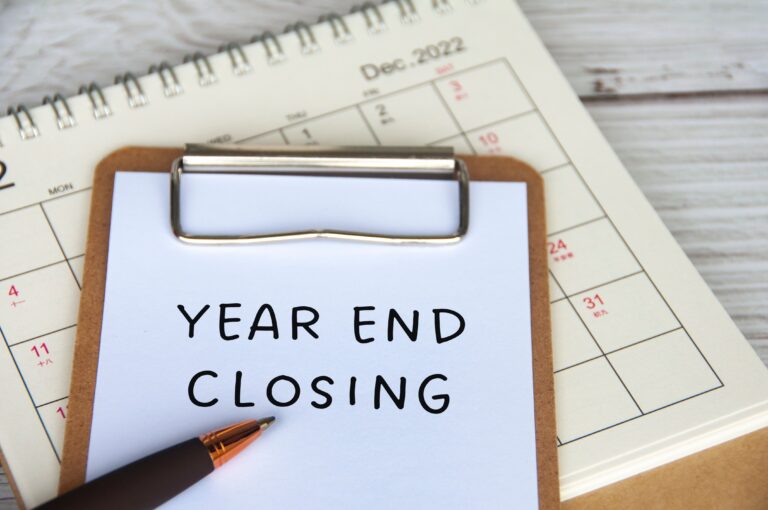Your year-end audit is around the corner and your staff is overwhelmed at the idea of getting ready. Maybe you vowed after last year’s audit that this year you’d do a better job with preparation. Or maybe your accounting firm has asked you to prepare ahead of time. Whatever your reasoning, here is a year-end planning checklist to guide you through the audit preparation process:
Balance Sheet
- Complete all bank reconciliations for all cash, credit card and PayPal accounts. Resolve reconciliation items between the bank and the general ledger (e.g., unknown or missing deposits, recording service or miscellaneous fees, and all checks issued and not cleared).
- Follow up with vendors on checks that have not cleared to determine whether to void and reissue. Review aged, outstanding checks (accounts payable, payroll, etc.) to determine if unclaimed property/escheats treatment is proper.
- Review the accounts receivable aging to determine if any accounts should be written off, sent to a collection agency or targeted for more aggressive internal follow-up. Review customer credits and determine if refunds should be issued, if credits should be rolled to offset future billings, or if unclaimed property/escheats treatment is proper.
- Ensure fixed assets and accumulated depreciation schedules are accurate (value, life, categorization, depreciable life) and fixed asset additions are supported by accounts payable invoices and/or loan documents.
- Adjust other asset accounts to their supported balance: inventory, security deposits, prepaid rent, prepaid expenses, employee loans, etc.
- Reconcile and clear out reconciliation items in suspense and intercompany accounts.
- Run the accounts payable aging and confirm tie-out to the general ledger. Evaluate aged invoices for proper treatment-cancel, pay in near future or hold off on payment until contract terms are met.
- Verify that debt/loan balances agree to the statements provided by the financial institution and that interest expense has been recorded accurately throughout the year.
- Review deferred rent along with prepaid rent and P&L rent expense to verify all components are recorded consistent with the amortization schedule. Obtain copies of all new lease contracts, highlighting key lease terms used to support preparation of amortization tables.
- Verify that sales tax liabilities and payroll and benefit liabilities are correct and match the subsequent payments in 2022. If you participated in the payroll tax deferral or a PPP loan, ensure it is recorded accurately.
- Confirm owner distributions and contributions were recorded in the correct equity accounts.
Income Statement
- Review revenue accounts for debit balances. Reclass if proper treatment would be to a cost of goods or expense account.
- Record unusual/infrequent income to a separate revenue account if it important to highlight it for management, tax preparer, auditor, etc.
- Perform a fluctuation review of revenue and expense accounts and margins to determine if general ledger activity seems reasonable and complete. Time period would include month over month, quarter over quarter and year over year.
- Review expense accounts for activity that may meet company fixed asset capitalization guidelines.
- Review miscellaneous and suspense accounts and reclass to the proper account unless immaterial.
- Review activity in travel, meals and entertainment expense accounts, ensuring proper separation.
Other:
- Make a list of any new or significant transactions, including debt acquisition/extinguishment, major acquisitions/disposals, existing contingencies, etc.
- Plan efficiently by scheduling key employees to be accessible during fieldwork and obtaining a comprehensive PBC (Prepared by Client) list.
- Upload supporting documentation from the PBC list to your auditor’s electronic portal (if provided).
- Make an effort to understand potential independence issues caused when a client uses their auditor as a resource.
The Benefits of Good Audit Prep
An audit can feel like an all-hands-on-deck endeavor for your team, but when you prepare your personnel (and ensure they have time available), devote time to documentation throughout the year and prepare for things ahead of time using this checklist, you’ll find that:
- Your audit will be much smoother.
- Your audit will take place over the planned period of time and stay on deadline.
- Your staff members will be less stressed because of fewer disruptions to their regular jobs.
The danger of not preparing for your audit is that your audit firm’s team may have to stop field work until you’re ready. During this unique COVID-19 environment, many CPA firms—like many organizations across the country—are short staffed and prioritizing clients that are organized and prepared. Clients that are not prove to be problematic from a time and resources perspective. They can cause delays in the process (disrupting the firm’s schedule)—don’t be that client!
What Should You Do When You Need Support?
Sometimes, despite your best efforts, your internal team needs help before and during audit time. That’s where TGRP’s consultants can come in. We have both bench consultants as part of our Consulting Division and short-term contractors as part of our Placement and Contract Solutions Division who can help with everything from completing that audit checklist to advising on how to apply new accounting guidance.
Whether you need an expert to clarify recently released FASB guidance, seek assistance to get things ready for the audit, or need an additional team member during this busy time, TGRP can support you.
Contact us to learn more about our experience and the skill sets of our team members. We’ll help make this audit your smoothest one yet!



